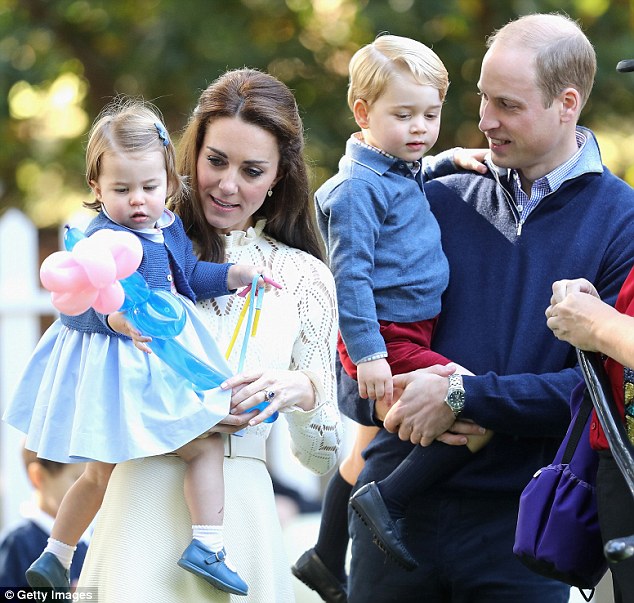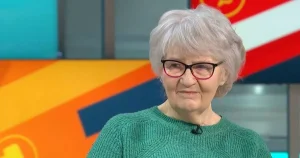How to build a Junior Isa fit for a prince or princess

Having just returned to work following a year’s maternity leave – and in the week a Royal pregnancy has been announced – what could be more fitting than writing an article on the best way to open a Junior Isa?
My son has just turned one and my husband and I would like to use his birthday money to open an investment account for him.
We may have a smaller amount to open the account with than the Cambridges but over the course of the next 18 years or so, we’d like to build up a fund that not even a little prince or princess would sniff at. Perhaps it’ll help him out with university costs or buying a home.




Growth potential: perhaps your money will grow enough for you to help your child buy a home
There is a big fund, investment trust and shares universe that you can put into your DIY stocks and shares Junior Isa. Remember that you are investing for your child rather than yourself so your investment style and horizon may be different.
When considering a platform for your Junior Isa you need to consider the same things as when picking an adult one. Think about both service and charges. Compare a few providers on administration fees, investment funds charges, fund and share dealing costs, regular investing charges and any other fees.
If you plan to regularly invest for your child make sure the cost of doing this is as low as possible. There are two main ways of doing this; either discounted regular monthly investment, for which platforms often charge around £1.50, or using a platform that offers free fund dealing.
Read our guide to the top DIY investing platforms and what they charge.
See the table below for a list of providers and a summary of their investment range, set-up costs and minimum contributions.
| Provider |
Investment choice | Fees | Minimum contribution | Notes |
|---|---|---|---|---|
| One Family | Choice of two funds – Family Balanced International Fund and Family Charities Ethical Trust | Annual management charge of 1.5% of the value of the fund. Other annual expenses of approximately 0.2% of the value of the fund are also deducted. | £10 per month | Open a OneFamily Junior ISA online and set up a monthly Direct Debit of £20 or more and you’ll get a £30 Amazon e-voucher. |
| Scottish Friendly | Choice of eight funds – from low to high risk | Annual management fee for the Scottish Friendly My Select Junior ISA is 1.5%. | £10 per month, £50 lump sum
|
When you take out a My Select Junior Isa we’ll pay £50 into the Junior ISA for your child (which will be deducted if you transfer to another provider within the first five years) |
| Hargreaves Lansdown | Very wide selection, including funds, shares and investment trusts | No set-up or transfer-in charges. No charges to buy or sell funds. Annual charge of 0.45% to hold funds and shares (capped at £45 for shares). Online share dealing from £5.95 per deal. | £100 lump sum of £25 per month | FREE Pedro the Penguin money box when you open or transfer to our Junior ISA |
| Chelsea Financial Services | Three ready-made portfolios or access to more than more than 2,500 funds | 0% service charge for the next 12 months so investors only pay the fund management charges. 0% switching fees when you move money between funds. | £25 per month or £50 lump sum | |
| AJ Bell | Shares, funds, investment trusts and ETFs | Include an annual custody charge of 0.25 per cent for funds and shares (limited to £5 per quarter for shares) and trading fees of £1.50 for funds and £9.95 for shares (reduced to £4.95 if there were more than 10 share trades in the previous month) | £25 per month
|
What to invest in: Expert strategy tips
Jeannie Boyle, a chartered financial planner and director of wealth manager EQ Investors, says: ‘In most cases an investment for a child implies a long timescale, ideal for adopting an adventurous investment strategy, where you accept the greater volatility that comes with the potential for greater returns in the long term.
‘This all suggests that a child’s portfolio should be invested largely in equities (shares) and property, since these are the types of assets that historically have produced the highest returns over the long term.’
Funds are the easy way to invest. You will be pooling your money with other investors to be invested across a range of assets, which can include shares, bonds, property or other investments. If they are ‘actively managed’, an investment manager will decide what to invest in. If they are ‘passive’, they’ll track an index, such as the FTSE 250.
WHAT ABOUT PENSIONS FOR KIDS?
Another investment opportunity that could provide a sizeable sum for a child’s very long-term future is a pension. They can be opened by parents or grandparents and contributed to from as soon as the child is born but can’t be accessed until the age of 65. Up to £3,600 a year can be paid in, or £300 a month, and as the government automatically tops up payments by 20 per cent, you only need to contribute £2,880 to reach the £3,600 annual limit.
There are two main versions of pensions for kids – a stakeholder pension or a junior self invested personal pension (Sipp). With the first, an investment manager chooses what to use your money to back and you pay for their services. With the cheaper latter option, you’re in charge and you’ll have a far greater range of investment options but you’ll have to shoulder the full burden of stock selection and be prepared to take the risk that entails.
Fidelity International’s analysis shows if you were to invest £300 a month into a Sipp for the first 18 years of your child’s life, they would end up with a very impressive £567,258 pension at the age of 65 even if they didn’t make further contributions during their adult life.
All funds will have a stated aim, and depending on what they invest in and how they do it, they will be more or less risky.
Juliet Schooling Latter, research director at Chelsea Financial Services – who invests in a Junior Isa for her stepsons – has some specific fund picks based on the experience of Chelsea’s clients.
She says: ‘We’ve generally found that, among our client base at least, people are willing to take a bit more risk with Junior Isa investments than they are adult Isas. This may be because they see the time horizon being longer (a full 18 years in most cases), or it’s not savings core to their own future/retirement – it’s a ‘nice extra’ for children. Whatever the reason, we see most money going into global and emerging market equity funds.
‘Another trend we see is that people like investing in areas that will capture the imagination of their older children, so they can talk to them about it without eyes glazing over!’






